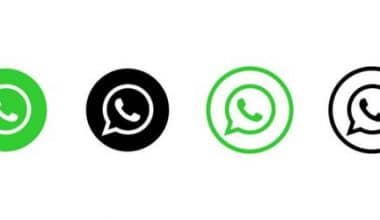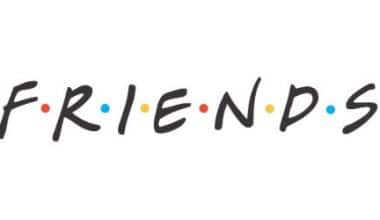Microsoft is the world’s leader in IT. It makes and sells a wide range of hardware, software, and IT services. It is one of the biggest companies in the world and does business in more than 190 countries. The business came into being in 1975. This article talks about the history of the old, new, and Windows Microsoft logo.
What Does Microsoft’s Logo Mean?
The Microsoft logo stands for technological progress that made computers available to everyone through the Windows operating system. Microsoft is the biggest company in the world that sells computer software. It is also a major provider of cloud computing services, video games, computer and gaming hardware, search, and other online services. Microsoft’s main office is in Redmond, Washington, and it also has offices in more than 60 other countries.
Old Microsoft Logo
The original logo was made by Bill Gates, Paul Allen, and Simon Daniels using an early programming language. The company’s name used to be Micro-Soft, with a hyphen between the two words. This is why the word has two levels in this early logo. From 1975 to 1979, it lasted.
This throwback logo reminds us of a time when disco balls were all the rage and roller skates were the coolest accessory. Back in the day, this logo’s style made it seem young and hip. The large, rounded letters look and feel flexible, but they don’t lose technical accuracy or detail. The logo has a great structure.
The stacked “O”s are a little distracting and don’t add anything to the design, but they have a great structure. The lines that make up the letters aren’t all the same width, which gives it a lot of depth and visual dimension.
In this early version, the spacing between the letters is a little off around the “C.” The space before the “R” is much bigger than the space between the “R” and “O.”
What Is the First Microsoft Logo?
It had the company’s name in a fairly original sans serif font and was a good representation of the 1970s and the Disco era. The letters consist of several so-called concentric lines, which give some people the impression of depth. It’s also the only Microsoft logo to be on two lines. Gates and Allen started Microsoft, which was first called Micro-Soft, which stood for microprocessors and software. They did this so they could make software for the Altair 8800, an early personal computer.
How Old Is the Microsoft Logo?
Microsoft’s logo has changed five times so far. The first one came out in 1975, and the current one in 2012. So, it is now 47 years since then.
Microsoft Logo History
However, in the Microsoft logo history, by 1975, Microsoft had built itself into one of the most successful software companies ever. After starting its company, Microsoft focused on its logo and brand after making its great technology. Their first logo was great for the time.
The all-caps word mark’s round edges and concentric lines had a lot of disco style, which was popular in the mid-1970s.
1972 — 1975
Traf-O-First Data’s logo was created in 1972. It was a stylized monogram of three black figures that stood out and was easy to remember. The big black letter “D” consists of two parts and a black circle in the middle. The circle stands for the letter “O,” and the left bar of the letter “D” looks like the letter “T,” so you can read the whole image as “TOD,” which is an abbreviation of the company’s name. At the beginning of its history, the company specialized in computer technologies for traffic lights.
The bold black logotype was placed to the right of the emblem. It had a smooth and rounded serif typeface, which made it look very stylish and friendly.
1975 — 1980
In 1975, the company changed its name to Microsoft, and Simon Daniels created the first official logo for the new brand in the same year. It was a black-and-white logotype with extra-bold lines on all capital letters, made up of many thin black-and-white lines. The font of that logo was a lot like Aki Lines, and it looked modern, stylish, and forward-looking.
1980 — 1982
In 1980, Simon Daniels changed the Microsoft logo again. The main idea is still black and white, but the typeface of the word “Microsoft” is now sharper and more modern. This time, the capital letters in black have the New Zelek font. The company only used that logo for two years.
In 1980, Get Report asked Bill Gates to make an operating system that would be included in their line of computers for consumers. So, MS-DOS was born, and a new era began. MS-DOS replaced IBM’s OS 2 and was the biggest competitor to LINUX and UNIX as a PC operating system.
1982 — 1987
In 1982, there was a change in Microsoft’s visual identity. The company name was written in a straight, simple sans-serif font, and the letter “O” was given striped patterns that visually split the word into two parts.
1987 — 2011
Scott Baker made the famous Microsoft logo in 1987, and it didn’t change much until 2012. The wordmark in italics Helvetica Black font, had a white triangle cut out of the letter “O” to separate “Micro” from “Soft” and make people look at the company’s name from a different angle.
2011 — 2012
The fourth Microsoft logo looks a little bit riskier, but it’s still pretty safe. Scott Baker, a designer at Microsoft, made this version. This is to mark the start of a new era in computing. Microsoft was giving OEMs access to OS/2. At that time, the company was the biggest maker of software for personal computers in the world.
The logotype uses the well-known Helvetica font and has a small slash in the “O” to emphasize the “soft” part of the name. Baker even said that the slash represented “motion and speed.” It was called the “Pac-Man” logo by the workers.
The new logo was a happy medium between the logo from the rock-star era of 1980 and the logo from the buttoned-down era of 1982. This logo is going somewhere, but not down a dark alley. It ran well for 24 years.
There was a slight change in the logo in 2011, but the changes were so small that you hardly notice them. The letters got a little smaller, and the “M” got a little more air between its vertical bars.
2012 — Today
Jason Wells designed the new logo, which has a geometric icon made up of four small colorful squares that make up a larger square, and a light gray logotype written in a simple and neat Segoe Semibold sans-serif typeface.
The Microsoft Slogan For The Logo
In 1994, the company added the slogan “Where do you want to go today?” to its logo. When Windows 95 came out on August 24, 1995, it was a moment in history. Not only that, but the Xbox360 game console came out in 2001, and in 2006, the slogan changed to “Your potential, Our passion.”
Windows Vista, an operating system that didn’t last long but was a good stepping stone, came out in 2007. Then, in 2011, Microsoft changed its slogan again. This time, it was “Be What’s Next,” but the logo stayed the same. After The Metro design language, all products, logos, websites, and services rebrand their products to reflect this change.
The Other Logo For Microsoft
The following are the other logotypes of Microsoft below;
#1. Office Logo
In 1995, Microsoft Office got its first logo. Besides the wordmark, it had a square with puzzle pieces put together inside (four colors: yellow, red, green, and blue). It didn’t change much between the Office versions of 1997 and 2000.
When Windows XP came out in 2001, they had to move the four-color puzzle to the left so that it would be in front of the wordmark using a gradient tool on the logo.
In 2003, a new logo took the place of the puzzle-piece one. It had four different-sized and-colored squares that fit together. This symbol was used in different ways in the 2007 and 2010 versions of Office, but not in the 2012 version. It had an abstract orange shape representing the new design language of the company.
#2. Excel Logo
In the beginning, the Microsoft Excel logo was an “X” that had an “L” on one side. So, you could read “XL” or “Excel” in the logo. Even though the logo changed about eight times between 1985 and 2013, each version had the same look. But in the 2013 version, the company switched to a simple “X” without any details.
#3. Outlook Logo
Except for the 1995 version, most older versions of the Microsoft Outlook logo had a gold color scheme. But the 2013 version had a whole new color scheme. The emblem is a dark blue color, and the background is white. The symbol can also be white on a blue background.
#4. Word Symbol
When it was first introduced in 1983, the Microsoft Word logo was just a wordmark with a clear “O.” The team had to choose a new logo after four years. This was the first time that the letter “W” was the most important part of the logo. It was put on top of a background that looks like a sheet of paper. Over the next 13 years, the logos that came out were all different versions of the same idea.
In the year 2000, the team had to create a brand-new logo with the letter “W” inside a square. The team had to choose the famous white-and-blue color scheme at that time. There was a change in the logo several times, and in 2013, the company came up with an emblem that looks like an open book with the letter “W” on the cover.
#5. Azure Logo
When Microsoft released its Azure cloud computing service in 2010, it had the company’s famous “flag” logo. The color was chosen to go with the name of the platform. In two years, four trapezoids were made into a new symbol. After two more years, the company got rid of the symbol and just had the wordmark logo left.
#6. Color
The logo consists of six different colors. In addition to the grey wordmark, there is also an emblem that is blue, yellow, green, and red. The white background shows all of these.
Windows Logo Microsoft
Windows consist of one of the best companies in the world. Microsoft has spent years building its brand, which is now worth $326.5 billion. The company’s amazing growth is a result of its operating system. It has beaten its rivals and stayed a well-known brand since the 1980s. Over the past 37 years, Microsoft has used many different logos to represent Microsoft Windows, its most popular product.
Scher was in charge of the design, along with Michael Beirut, Daniel Well, and teams from Microsoft. Scher is a graphic designer who works for Pentagram, a design company that has done work for many different companies. The company has done work for tech companies like IBM, Yahoo, Oppo, and Slack. The Microsoft Windows logo is below;
1985 to 1989: The Tiled Window
By the mid-1980s, Microsoft was doing great. Its main product used the 1981 MS-DOS or Disk Operating System. When the company released the Windows operating system with a Graphical User Interface in 1985, everything changed.
This technological achievement is shown by an asymmetric icon and a wordmark with serifs.
The color blue also shows innovation, which is why so many tech logos are blue. It looks old-fashioned and has nothing in common with the logos that were about to come. People used monochrome monitors when they first started using computers. It was a must-have for many businesses, including stores, professionals, and others. The black-and-white Windows logo shows respect for this fact.
The Stark Window, from 1990 to 1991
Like Windows 1. x and 2. x, Windows 3.0 (1990) mostly used a logo that was made up of words, as you can see on the Windows 3.0 splash screen to the right. “With Windows 3.0, there wasn’t a standard Windows logo,” says Brad Silverberg, who was Microsoft’s Vice President of Windows at the time.
Some Windows application retail boxes also used an early picture of a window with heavy gradients to show that the software was compatible with Windows 3.0. (seen above on the left.) This is the first time a metaphor for a house window with four panes and a thick border appears. It’s a design idea that Windows still uses in different ways.
The Windows Flag, from 1990 to 1993
In 1992, Windows 3.1 gave Microsoft a new look by introducing a colorful new logo that took the windowpane design and turned it into a waving flag with a trail behind it. This flag window is made up of four different colors: red, green, blue, and yellow. The waving trail is made up of separate blocks, which could be interpreted as discrete digital units of information. Microsoft also used this flag logo with Windows NT 3.1, the first version of NT, the next year.
The Flying Flag: From 1994 to 2000
In 1994, Microsoft designers gave the waving flag logo from the Windows 3.1 era a new look by tilting it slightly clockwise, giving the impression of movement and action. This new logo first showed up in Windows NT 3.5 in 1994, but it quickly made its way to Windows 95, Windows NT 4.0 (1996), Windows CE (1996), Windows 98, Windows Me (2000), and Windows 2000 in different ways.
In particular, Microsoft gave the logos for Me and 2000 a new look by adding some square window elements around the flying flag.
The Simple Flag: From 2001 to 2011
In 2001, when Windows XP came out, Microsoft took the idea of a flying flag and simplified it into four simple colored panels that wave in the wind. The panels still had similar colors, but the black border went away. With Windows Vista (2006), Microsoft gave the simple flag a new center bloom gradient and usually put it in a shaded bubble.
Windows 7 (released in 2009) carried on the tradition started by Vista with some changes, and Windows Phone 7 (released in 2010) used a white version of the simple flag set in bubbles or squares.
The Slanted Window: 2012 to 2020
With Windows 8, Microsoft went back to the drawing board to redesign the Windows logo. They got rid of the waving flag-like design they had been using and made the four panes look more like a house window again, but set at an angle. The new logo looks like Windows 8’s “Metro” interface, which uses app panels (tiles) instead of icons.
The new angled window logo was also seen in Windows RT (2012), Windows Phone 8 (2012), some versions of Windows Embedded Compact, Windows 8.1 (2013), and Windows 10. (2015). But different versions have different angles and sizes of windows.
The Grid Window: From 2021 to the present day
Microsoft releases Windows 11 in 2021. In the Windows 11 logo, Microsoft removed the angle and replaced it with a simple blue grid of four squares. In fact, it was based on the Microsoft logo, which debuted in 2012 and has the same shape but is now in the four traditional Windows colors (red, green, blue, and yellow).
However, in a promotional video for Microsoft, the brand manager for Windows, Vincent Joris, said, “We looked at the Microsoft logo and made it blue because that’s the color most people associate with Windows.” The new logo for Windows 11 shows that it has a fresh new look, but it still has the famous four-pane house window design that has been used for at least 22 years.
Microsoft New Logo
A new logo debuted on August 23, 2012, a new logo debuted. The Microsoft team came up with a bright, colorful, and eye-catching logo through brainstorming. Directly from Microsoft:
The logo is based on the product design principles and the history of the brand’s values, fonts, and colors.
The logo consisted of two main parts: the symbol and the logotype. The logotype uses a grey Segoe font and keeps the F and T together. The emblem logo consists of four bright colors—red, green, yellow, and blue—in the shape of a square window to represent the company’s wide range of products.
Then, in 2012, Microsoft came out with Windows 8, Windows Phone 8, new Xbox Services, and a new version of MS Office. Also, the most interesting thing about the symbol was that the well-known four-box icon didn’t just stand for a set of color-coded Office programs. For example, the blue for Word, the green for Excel, the red for PowerPoint, and the yellow for Outlook all helped Microsoft’s Windows get off to a good start and keep going from there.
Find Out More
The Segoe UI font was used for the first time by Microsoft. Not only was the font used in the already-made design and marketing tools, but it was also added to the software packages for mobile, desktop, and laptop operating systems.
Four different-colored squares make a window that looks a lot like Windows, which is one of the company’s most important products. Some people say that the red square stands for PowerPoint or the Office suite, the blue square for Word or Windows, the green square for the Xbox or Excel, as well as the yellow square for Outlook or Bing.
Did Microsoft Change Their Logo?
In 2012, the Microsoft logo went through a big change. After several meetings, employees at Microsoft came up with this logo, which is still used today. The bold and italic parts of the old logo went away, and the Segoe UI font took its place.
Microsoft History
Bill Gates and Paul Allen met at Harvard University in 1975 and found that they had similar interests. This was the start of Microsoft, a software company that would grow faster than anyone could have imagined.
So strong was their drive that Bill Gates dropped out of a prestigious university to follow his passion. With his love of technology and ability to think creatively, Gates was able to hire a programmer whose skills could help him learn even more about computers. He worked on making a DOS-based operating system that would work well on IBM computers at the time.
The leaders of IBM saw how hard he worked, and he got the very first deal for his project. But the story goes that Gates didn’t think of a software interface to control an operating system until he saw Steve Jobs’ Apple 2 computer.
More Information About the Microsoft History
Gates wanted to make it easier for people to use IBM’s business computers, so he started Microsoft to change how people use computers. The company owns Xbox, LinkedIn, Skype, and GitHub, in addition to its well-known operating systems that run on almost 75% of desktop computers around the world.
Gates knew a lot about technology and was smart about computers, but he wasn’t a programmer, which was inconvenient for him. He hired a programmer to make a simple operating system for IBM computers called DOS. Gates was a good and smart negotiator, and he convinced IBM’s CEOs that he could license an operating system that would help their company sell their new business computers, which ran so fast at the time that it was amazing.
However, the first step of building the Microsoft company has begun. Gates negotiated with IBM to get full rights to the operating system. IBM agreed, saying that hardware, not software, was the future of computers. They were so wrong. He paid $54,000 for the full licensing rights to a DOS system programmer and then sold it to IBM. This was a very real way in which this helped Gate’s new company get off the ground.
The Link Between Gates And Jobs
Bill Gates quickly found out through word of mouth that another young entrepreneur was making a big difference in technology. Steve Jobs was his name, and Gates paid attention to him when he made the Apple 2 computer.
Gates decided to keep an eye on Jobs and eventually asked him to work for him so he could learn about user experience (UX), which is at the heart of software. During this time, Gates had the idea for the Windows operating system, which would go on to be an important part of history.
Even though the Windows system helped Microsoft Company make more money than anyone could have imagined, its operating system is the most well-known in the world.
Can You Use Microsoft Logos?
Only the Microsoft trademark and brand guidelines can be followed when using a Microsoft logo.
Why Did Windows Change Its Logo?
The brand did this because it wanted to honor the idea of windows in perspective. Microsoft Windows wanted the logo to show how different people use the software to meet their own needs. Their old flag logo now has a classical look, which means that the people who made it did not use a computer system.
What Do the 4 Colours of Microsoft Mean?
This logo was made to show what the company is known for. The red color stands for Office applications, the green color stands for Excel or Xbox, the blue color stands for Word, and the yellow color stands for Outlook. Also, Microsoft has its own typeface called Segoe UI, which was designed by Steve Matteson.
Who Invented the MS Logo?
Bill Gates and Paul Allen, the company’s founders, used an early programming language to make the first logo, which was made by Simon Daniels.
What Is a Turtle in the Logo?
A turtle is a triangle that draws in the Logo Graphics Window based on what commands we type into Logo. The Turtle lives in the middle of the graphics screen. You can also call these instructions “primitives.” In the Command Input Box bar, you type commands that start with “primitive.”
What Font Is the Microsoft Logo?
In 2015, the Microsoft logo was changed. Instead of the Helvetica Bold Italic font, the new logo uses the Segoe font. Experts in design say that this choice fits with the company’s visual identity and the way its operating systems use type.
What Is the Windows Logo Name?
If marketing genius Rowland Hanson hadn’t convinced Microsoft founder Bill Gates that Windows was a much better name than its original name, Interface Manager, Windows might have been released under that name.
The Windows logo key also called the Windows key, the Win key, the Start key, the logo key, the flag key, or the super key is a key on a keyboard that was first used on the Microsoft Natural keyboard in 1994. This key became a standard on PC keyboards. When you tap the key in Windows, the start menu comes up.
What Are the Four Colors in the Microsoft Logo?
The “square of squares” in Microsoft’s new corporate logo is made up of four colors: red, blue, yellow, and green (note that these colors can also be found on the wings of the MSN butterfly).
What Does the Nike Logo Represent?
Nike seems to be the Winged Goddess of Victory in Greek mythology. The logo is a “swoosh,” which comes from the goddess’s wing and means speed, movement, power, and motivation.
Conclusion
Today, the Microsoft logo is a symbol of excellence in the technology world. It stands for a big step forward in technology that made computers accessible to everyone by making the Windows operating system easy to use. Several versions of Windows have kept getting better and better, and over the years, many new features, icons, and apps have been added.
Related Articles
- SOFTWARE MANAGEMENT SYSTEMS: Types, Features, and Examples
- WINDOWS LOGO: Concept, Symbol, History, and All You Need to Know
- Window Dressing: Best 2023 Window Dressing Ideas for any Business (+ All you need)
- NAVY LOGO: Meaning, Jobs, and Requirement
- Best Data Management Software For Your Small Business In 2023






